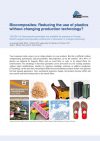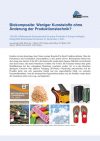Showing 161–180 of 423
-
23 Downloads
2020-05
FREE
Plus 19% MwSt.Free Shipping23
Downloads -
Commercialisation updates on bio-based building blocks − Content
Markets & Economy
5 Pages
1698 Downloads
1698 Downloads
2020-05
FREE
1698
Downloads -
2020-05
100 € – 500 €Price range: 100 € through 500 € ex. tax
Plus 19% MwSt.Press
release Select
licenceCommercialisation updates on bio-based building blocks – The exit of key players, restructuring of production capacities worldwide, a shrinking pool of new start-up companies but also burgeoning discovery and increasing production of new building blocks
UK-based chemical industry consultancy Tecnon OrbiChem and the nova-Institute release their latest “Commercialisation updates on bio-based building blocks”
Since the last report in 2017 the bio-based building block market has shown considerable changes. Ranging from the exit of key players, the restructuring of several production capacities worldwide, and a shrinking pool of new start-up companies but also, burgeoning discovery and even the increasing production of new building blocks.
-
How much biomass do bio-based plastics need? − Article in bioplastics MAGAZINE
Markets & Economy, Policy, Sustainability & Health
2 Pages
1518 Downloads
1518 Downloads
2020-04
FREE
1518
Downloads -
Can the European Union’s kerosene demand be met by the amount of biomass produced in the EU? − Full version
Markets & Economy, Policy, Sustainability & Health
2 Pages
263 Downloads
263 Downloads
2020-03
FREE
263
Downloads -
Kann der Kerosinbedarf der Europäischen Union durch in der EU produzierte Biomasse gedeckt werden? − Langfassung
Markets & Economy, Policy, Sustainability & Health
2 Pages
139 Downloads
139 Downloads
2020-03
FREE
139
Downloads -
Renewable Carbon is the Key to a Sustainable and Future-Oriented Chemical and Plastic Industry − Full version
Markets & Economy, Policy, Sustainability & Health
46 Pages
1519 Downloads
1519 Downloads
2020-03
FREE
1519
Downloads -
8th Conference on CO2 as Feedstock for Fuels, Chemistry and Polymers 2020 Proceedings
Markets & Economy
90 Downloads
90 Downloads
2020-03
FREE
Plus 19% MwSt.Free Shipping90
Downloads -
Opinions of the Chinese National Development and Reform Commission and the Ministry of Ecology and Environment concerning the further reinforcement of measures against plastic pollution − Full version
Markets & Economy, Policy
7 Pages
148 Downloads
148 Downloads
2020-02
FREE
148
Downloads -
Which measures could boost the European bio-based economy? − Full version
Policy
3 Pages
131 Downloads
131 Downloads
2020-02
FREE
131
Downloads -
Bio-based Building Blocks and Polymers – Global Capacities, Production and Trends 2019 – 2024 − Short version
Markets & Economy
16 Pages
2537 Downloads
2537 Downloads
2020-02
FREE
2537
Downloads -
1st International Conference on Cellulose Fibres Proceedings 2020
Markets & Economy, Policy, Sustainability & Health, Technology
141 Downloads
141 Downloads
2020-01
FREE
Plus 19% MwSt.Free Shipping141
Downloads -
Bio-based Building Blocks and Polymers – Global Capacities, Production and Trends 2019 – 2024 − Content
Markets & Economy
10 Pages
1536 Downloads
1536 Downloads
2020-01
FREE
1536
Downloads -
84 Downloads
2020-01
FREE
84
Downloads -
Bio-based Building Blocks and Polymers – Global Capacities, Production and Trends 2019 – 2024
Markets & Economy
379 Pages

2020-01
100 € – 500 €Price range: 100 € through 500 € ex. tax
Plus 19% MwSt.Press
release Select
licenceThe global bio-based polymer market 2019 – A revised view on a turbulent and growing market
Turbulent times for bio-based polymers in 2019: PLA sold out despite expansion, as did PHA. Bio-based PP available for the first time, increased production of PBAT, PBS, bio-based PE, starch-containing polymer compounds and epoxy resins. Lower production is seen particularly in bio-based PET. At the same time, there is a lack of support from policy makers, who are taking bio-based and biodegradable plastics into collective punishment with fossil plastics in the Plastic Policy.
The new market and trend report “Bio-based Building Blocks and Polymers – Global Capacities, Production and Trends 2019-2024” from the German nova-Institute shows capacities and production data for all bio-based polymers in the year 2019 and a forecast for 2024. In 2019, the total production volume of bio-based polymers was 3.8 million tonnes, which is 1% of the production volume of fossil-based polymers and about 3% more than in 2018 – this CAGR is expected to continue until 2024. The major biomass feedstock used for bio-based polymer production are biogenic by-products (46%), especially the by-product glycerol from the biodiesel production, used for epoxy resin production.
-
Renewable Carbon Strategy − Renewable Carbon Strategy – Article in Bioplastics MAGAZINE
Markets & Economy, Policy
3 Pages
344 Downloads
344 Downloads
2020-01
FREE
344
Downloads -
33 Downloads
2019-11
FREE
Plus 19% MwSt.Free Shipping33
Downloads -
Levulinic acid – A versatile platform chemical for a variety of market applications − Graphic
Markets & Economy
223 Downloads
223 Downloads
2019-10
FREE
223
Downloads -
Biocomposites: Reducing the use of plastics without changing production technology? − Full version
Markets & Economy
4 Pages
699 Downloads
699 Downloads
2019-10
FREE
699
Downloads -
Biokomposite: Weniger Kunststoffe ohne Änderung der Produktionstechnik? − Langfassung
Markets & Economy
4 Pages
273 Downloads
273 Downloads
2019-10
FREE
273
Downloads


![Proceedings 13th Conference on Bio-based Materials 2020 [Digital]](https://renewable-carbon.eu/publications/wp-content/uploads/2020/05/21-01-07_RC-Publications-Cover-Proceedings_Bio-based-Materials-100x141.png)
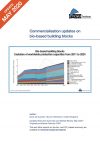
![Commercialisation updates on bio-based building blocks [Digital]](https://renewable-carbon.eu/publications/wp-content/uploads/2020/07/20-05-29_UPDATED_Commercialisation-updates-on-bio-based-building-blocks-100x141.jpg)
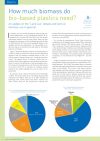
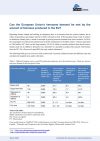
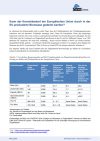

![8th Conference on CO2 as Feedstock for Fuels, Chemistry and Polymers 2020 Proceedings [Digital]](https://renewable-carbon.eu/publications/wp-content/uploads/2020/05/21-01-07_RC-Publications-Cover-Proceedings_CO2-based-100x141.png)
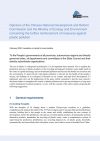


![1st International Conference on Cellulose Fibres Proceedings 2020 [Digital]](https://renewable-carbon.eu/publications/wp-content/uploads/2020/05/21-01-07_RC-Publications-Cover-Proceedings_Cellulose-Fibres-100x141.png)


![Bio-based Building Blocks and Polymers – Global Capacities, Production and Trends 2019 – 2024 [Digital]](https://renewable-carbon.eu/publications/wp-content/uploads/2020/07/20-01-30_Bio-based_Building_Blocks_and_Polymers-100x141.jpg)

![Proceedings Biocomposites Conference Cologne 2019 [Digital]](https://renewable-carbon.eu/publications/wp-content/uploads/2020/05/21-01-07_RC-Publications-Cover-Proceedings_Biocomposites-100x141.png)

